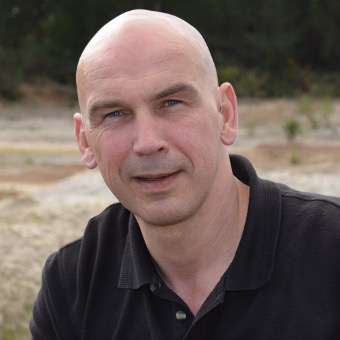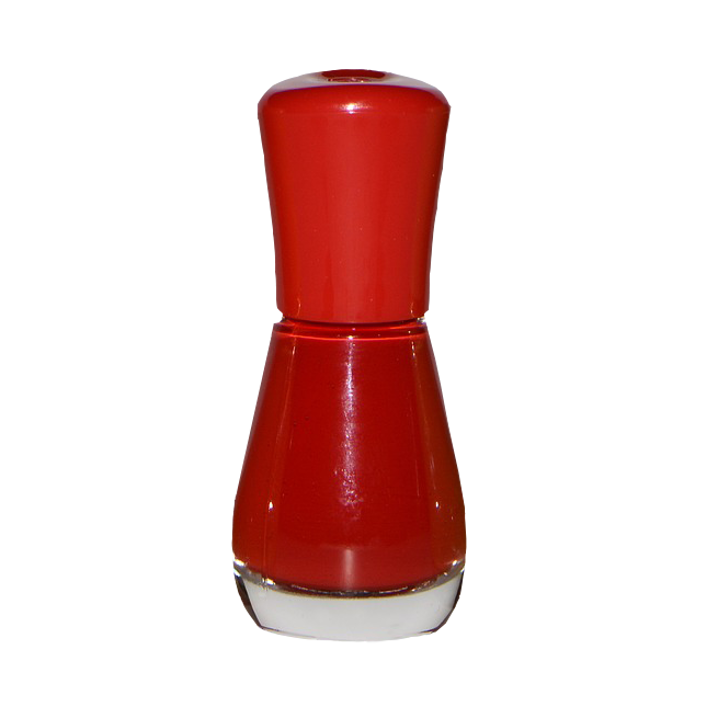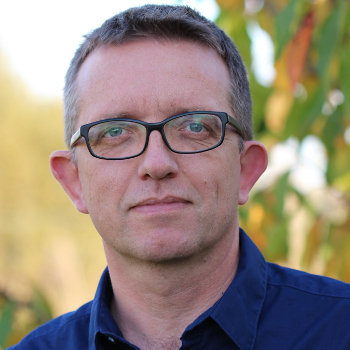16.05.2019 News
Agriculture and forestry Plants Plant breeding research
Genomes of 487 wheat varieties deciphered
An international study confirms the theory of the origin of bread wheat and opens up new breeding potentials for the crop.
16.05.2019 News
Agriculture and forestry Plants Plant breeding research
An international study confirms the theory of the origin of bread wheat and opens up new breeding potentials for the crop.

13.05.2019 Interview
Agriculture and forestry Waste Agriculture sciences
Michael Quintern breeds earthworms to transform biowaste into precious humus.
22.05.2019 News
Food Microorganisms Agriculture sciences
Algae are in high demand as food. A German-Chinese research team now wants to develop macroalgae for new applications.
23.05.2019 News
Agriculture and forestry Plants Plant breeding research
Oxygen deficiency usually harms plants. However, an international team of plant researchers reports that too much air is even harmful for the development of new leaves and flowers.
24.05.2019 News
Agriculture and forestry Plants Agriculture sciences
Leibniz researchers from Braunschweig have identified a new pathogen from dwarf parsley plants that is responsible for blocking growth.
21.05.2019 Success story
Machine and plant engineering Microorganisms Biotechnology/Systems biology
A fuel cell with a textile anode could make various sewage treatment plants almost energy neutral and also make other biotechnological processes more economical.
28.05.2019 News
Agriculture and forestry Plants Agriculture sciences
Researchers from Aachen and their partners have developed a field robot that detects weeds and removes them with electric shocks.
29.05.2019 News
Agriculture and forestry Animals Agriculture sciences
Max Planck researchers from Mainz want to use mini-sensors to ensure even temperature in beehives, thus better protecting honey bees from parasites.
31.05.2019 News
Agriculture and forestry Plants Agriculture sciences
The nano-active substance transporters known from medicine were successfully used for the first time for the treatment of dreaded plant diseases. And on top of it all, they are also made of waste.
27.05.2019 News
unspecific unspecific Bioökonomie mitgestalten
At the ICCA climate conference in Heidelberg, political and economic actors stressed the need for cooperation between government decision-makers.
28.05.2019 News
unspecific unspecific unspecific
In a statement on genome editing, the Max Planck Society argues for the targeted use of CRISPR-Cas9 in plant breeding and urges legislative changes.
03.06.2019 News
Agriculture and forestry Plants Plant breeding research
Researchers at the University of Düsseldorf are developing genetic approaches to accelerate the path to new varieties.
05.06.2019 News
Agriculture and forestry Plants Agriculture sciences
A Franco-German research project is investigating how efficient agriculture could largely do without chemical-synthetic crop protection.
07.06.2019 News
Agriculture and forestry Plants Agriculture sciences
The sustainable production of crops is the focus of a cooperation between agricultural research institutions in Germany and Brazil.
22.11.2018 News
unspecific unspecific unspecific
Following the inititative of the German University of Hohenheim, the six leading European universities regarding bioeconomy will join forces and establish a pan-European university.
23.11.2018 News
unspecific unspecific unspecific
The 2018 UN Biodiversity Conference, held until the end of November in Sharm El-Sheikh, Egypt, focusses on the implementation of global goals for the protection of biodiversity.
26.11.2018 News
Chemistry Microorganisms Chemistry
An algal technology developed by Munich scientists could help mitigate global warming. It converts carbon dioxide from the atmosphere into valuable carbon fibers.
27.11.2018 News
Agriculture and forestry Plants Agriculture sciences
The International Rice Research Institute IRRI and the Tübingen-based biotech company Computomics aim to identify new resistant rice varieties using artificial intelligence.
03.12.2018 News
Food Plants Agriculture sciences
In a new report, the international InterAcademy Partnership states that food production and consumption must change drastically to limit climate change.
06.12.2018 News
unspecific unspecific unspecific
During this years "disruptive innovation festival" numerous online sessions and podcasts explained the concept and opportunities of a circular economy and insects as food or feed.
03.12.2018 Success story
Agriculture and forestry Plants Biotechnology/Systems biology
A database of the RWTH Aachen simplifies the analysis of new molecular genetic information from plant research.
07.12.2018 News
unspecific unspecific Chemistry
Many types of soft PVC are harmful to one's health. Thus, a consortium of the Hamburg and Bielefeld universities as well as BASF SE is looking for biobased alternatives.
06.12.2018 News
unspecific unspecific unspecific
The European Commission calls for a pan-European long-term strategy for a prosperous and climate neutral economy and names the bioeconomy as key to achieving these goals.
11.12.2018 News
Food Animals Bioökonomie mitgestalten
According to Cologne-based researchers, praising insect food as a luxury object rather than advertising it as environmentally-sound motivates more people to actually eat it.

17.12.2018 Product
Consumables Microorganisms
Decorating finger and toe nails is not a recent trend. The oldest proof for decorated nails is about 5000 years old and comes from China.
12.12.2018 News
Chemistry unspecific Biotechnology/Systems biology
Materials researchers from Karlsruhe are using enzymes as a biobased, energy-saving and sustainable alternative to conventional catalysts.
17.12.2018 News
Food Plants Agriculture sciences
Ecologists from Germany and Switzerland report that maize and wheat use the metabolite benzoxazinoid differently depending on which pest attacks them.
21.12.2018 News
Food Plants Agriculture sciences
Nuts are traditional winter and Christmas treats. However, they are not only tasty and nutritious, they also have a huge potential as source material for the bioeconomy.
18.12.2018 News
Consumables Plants Chemistry
Are bioplastics really a "green" alternative to petroleum-based plastics? According to researchers in Bonn, bioplastics are only sustainable if crop residues are used for its production.
19.12.2018 News
Agriculture and forestry Plants Agriculture sciences
Jasmonic acid is widely known as a defence hormone of plants. Researchers from Würzburg have now identified another function: it also causes the closure of stomata.

Researcher Profile
Chemistry Plants Biotechnology/Systems biology
Andrea Kruse wants to promote the material use of biomass. The chemist from Hohenheim hopes to establish a biorefinery on the farm in order to produce basic chemicals from plant feedstocks.
08.01.2019 News
Pharmaceutical industry Plants Biotechnology/Systems biology
Zoologists in Kiel have discovered highly adhesive cellulose nanofibres in the slimy protective layer of plant seeds, which may be very useful for biomedical applications.
07.01.2019 News
unspecific Microorganisms Biotechnology/Systems biology
Due to its magnetic properties, the microbial species Magnetospirillum has enormous potential for biotechnological applications and was voted Microbe of the Year 2019.
10.01.2019 News
Pharmaceutical industry unspecific Biotechnology/Systems biology
The European project PANBioRA is investigating and developing tools and methods in order to assess the risks of new biobased medical products in a standardised way.
15.01.2019 News
Food unspecific Bioökonomie mitgestalten
Fraunhofer physicists have developed a pocket-sized food scanner that uses infrared light and intelligent algorithms to determine the shelf life of food.
15.01.2019 News
Machine and plant engineering Plants Materials sciences
Materials scientists at TU Dresden have developed wood fibre-based oil binders that can clean water in the event of an oil spill.
15.01.2019 Studies and statistics
Chemistry Microorganisms unspecific
A new study by the nova-Institut investigates the sustainability of biobased raw materials for the chemical industry, both quantitatively and qualitatively.

15.02.2019 Interview
unspecific Plants Biodiversity
The Berlin biologist Michael Ohl wants to record the diversity of animal species on earth with the help of innovative technologies - at the new Center for Integrative Biodiversity Discovery.
18.01.2019 News
Chemistry unspecific Chemistry
Cosmetics are a growing market but mostly based on petrochemicals. During a trade show in Paris Covestro is now presenting a new sustainable hair gel and sun protect lotion.

22.01.2019 Interview
Chemistry Fungi Biotechnology/Systems biology
Thomas Helle, Managing Director of Tübingen-based Novis GmbH, is developing a biogas plant using mushroom compost as part of the EU project "Smartmushroom".